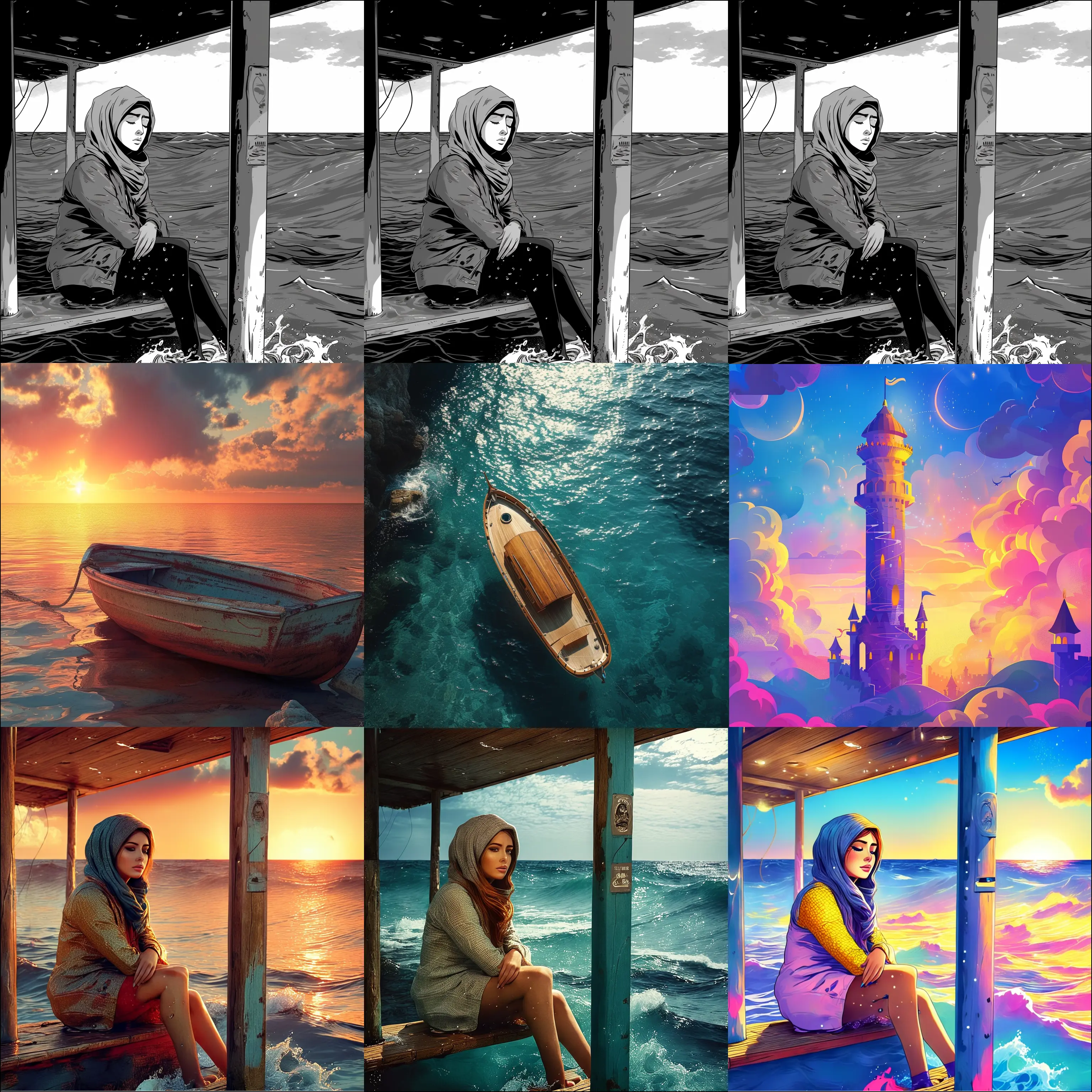ComfyUI Node: Lora Loader
Lora Loader
CategoryWAS Suite/Loaders
WASasquatch (Account age: 4910days) Extension
WAS Node Suite Latest Updated
2025-03-27 Github Stars
1.44K
How to Install WAS Node Suite
Install this extension via the ComfyUI Manager by searching for WAS Node Suite- 1. Click the Manager button in the main menu
- 2. Select Custom Nodes Manager button
- 3. Enter WAS Node Suite in the search bar
Visit ComfyUI Online for ready-to-use ComfyUI environment
- Free trial available
- 16GB VRAM to 80GB VRAM GPU machines
- 400+ preloaded models/nodes
- Freedom to upload custom models/nodes
- 200+ ready-to-run workflows
- 100% private workspace with up to 200GB storage
- Dedicated Support
Lora Loader Description
Enhance AI art generation with LoRA models for dynamic image modifications and creative experimentation.
Lora Loader:
The Lora Loader node is designed to enhance your AI art generation process by allowing you to apply LoRA (Low-Rank Adaptation) models to both diffusion and CLIP models. This node modifies the way latents are denoised, enabling you to apply various styles and effects to your generated images. By integrating multiple LoRA nodes, you can achieve complex and nuanced modifications, making your artwork more dynamic and unique. The primary goal of the Lora Loader is to provide a flexible and powerful tool for AI artists to experiment with different styles and effects, enhancing the creative possibilities of their AI-generated art.
Lora Loader Input Parameters:
model
This parameter specifies the diffusion model to which the LoRA will be applied. The diffusion model is responsible for generating the initial latent space that will be modified by the LoRA. The model parameter is crucial as it determines the base upon which the LoRA modifications will be applied.
clip
This parameter specifies the CLIP model to which the LoRA will be applied. The CLIP model is used to guide the generation process by providing textual descriptions that influence the final output. Applying LoRA to the CLIP model allows for more refined and targeted modifications based on the textual input.
lora_name
This parameter allows you to select the name of the LoRA to be applied. The LoRA name corresponds to a specific file that contains the LoRA weights and configurations. Selecting the appropriate LoRA name is essential for achieving the desired style or effect in your generated images.
strength_model
This parameter controls the strength of the modification applied to the diffusion model. It is a floating-point value with a default of 1.0, a minimum of -100.0, and a maximum of 100.0, with a step size of 0.01. Adjusting this value allows you to fine-tune the intensity of the LoRA's effect on the diffusion model, with negative values inverting the effect.
strength_clip
This parameter controls the strength of the modification applied to the CLIP model. Similar to strength_model, it is a floating-point value with a default of 1.0, a minimum of -100.0, and a maximum of 100.0, with a step size of 0.01. This parameter allows you to fine-tune the intensity of the LoRA's effect on the CLIP model, with negative values inverting the effect.
Lora Loader Output Parameters:
MODEL
The modified diffusion model is returned as the output. This model has been altered by the LoRA to incorporate the desired styles and effects, making it ready for the next stages of the image generation process.
CLIP
The modified CLIP model is also returned as the output. This model has been adjusted by the LoRA to better align with the textual descriptions provided, enhancing the coherence and relevance of the generated images to the input prompts.
Lora Loader Usage Tips:
- Experiment with different
strength_modelandstrength_clipvalues to find the optimal balance for your specific artistic needs. Start with small adjustments to see how they affect the output. - Combine multiple LoRA nodes to layer different styles and effects, creating more complex and unique images.
- Use descriptive and relevant
lora_namefiles to ensure that the modifications align with your artistic vision.
Lora Loader Common Errors and Solutions:
"lora key not loaded: <key_name>"
- Explanation: This warning indicates that a specific key in the LoRA file was not loaded, which may affect the final output.
- Solution: Ensure that the LoRA file is correctly formatted and contains all necessary keys. Verify that the
lora_nameparameter is correctly specified and that the file exists in the designated directory.
"File not found: <lora_name>"
- Explanation: This error occurs when the specified LoRA file cannot be found in the directory.
- Solution: Check that the
lora_nameparameter is correctly specified and that the file exists in the designated directory. Ensure that the file path is correct and that there are no typos in the file name.
"Invalid strength value: <value>"
- Explanation: This error occurs when the
strength_modelorstrength_clipparameter is set to a value outside the allowed range. - Solution: Ensure that the
strength_modelandstrength_clipvalues are within the specified range (-100.0 to 100.0). Adjust the values to fall within this range and try again.
Lora Loader Related Nodes
RunComfy is the premier ComfyUI platform, offering ComfyUI online environment and services, along with ComfyUI workflows featuring stunning visuals. RunComfy also provides AI Playground, enabling artists to harness the latest AI tools to create incredible art.


